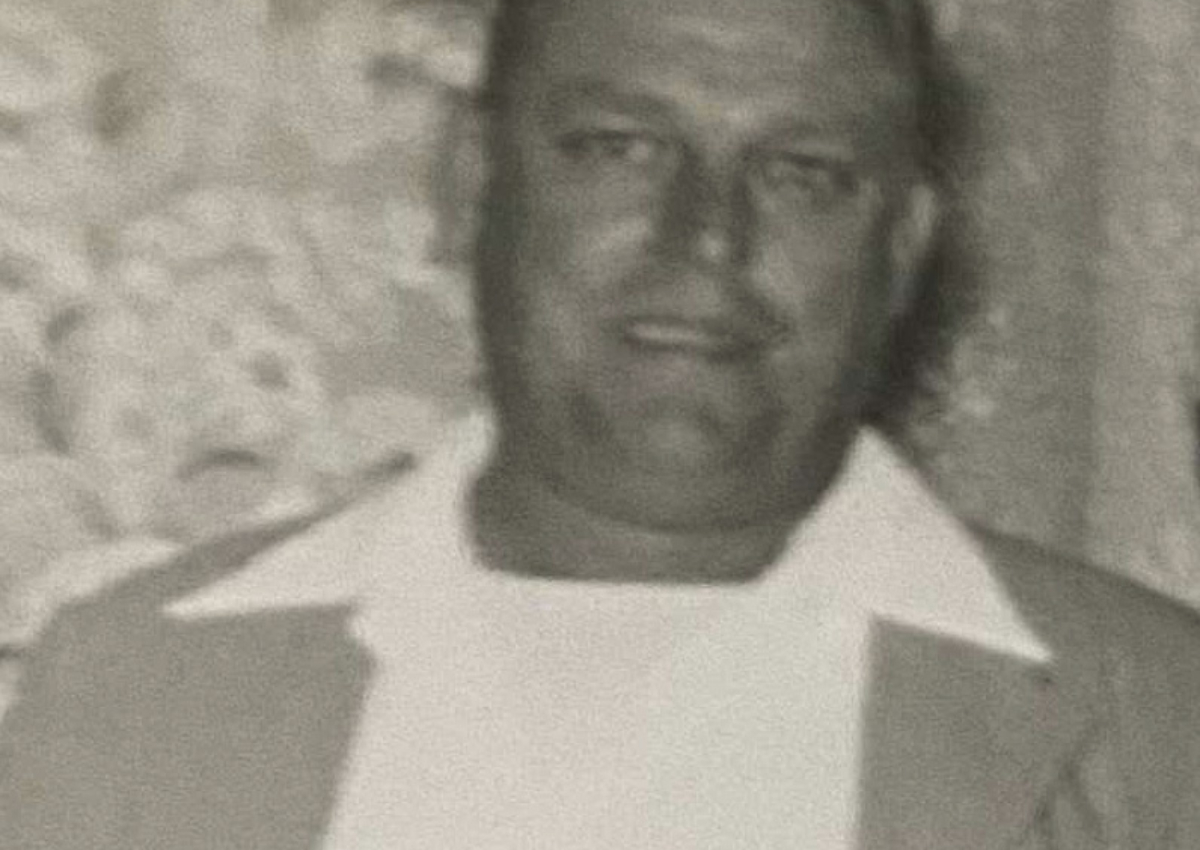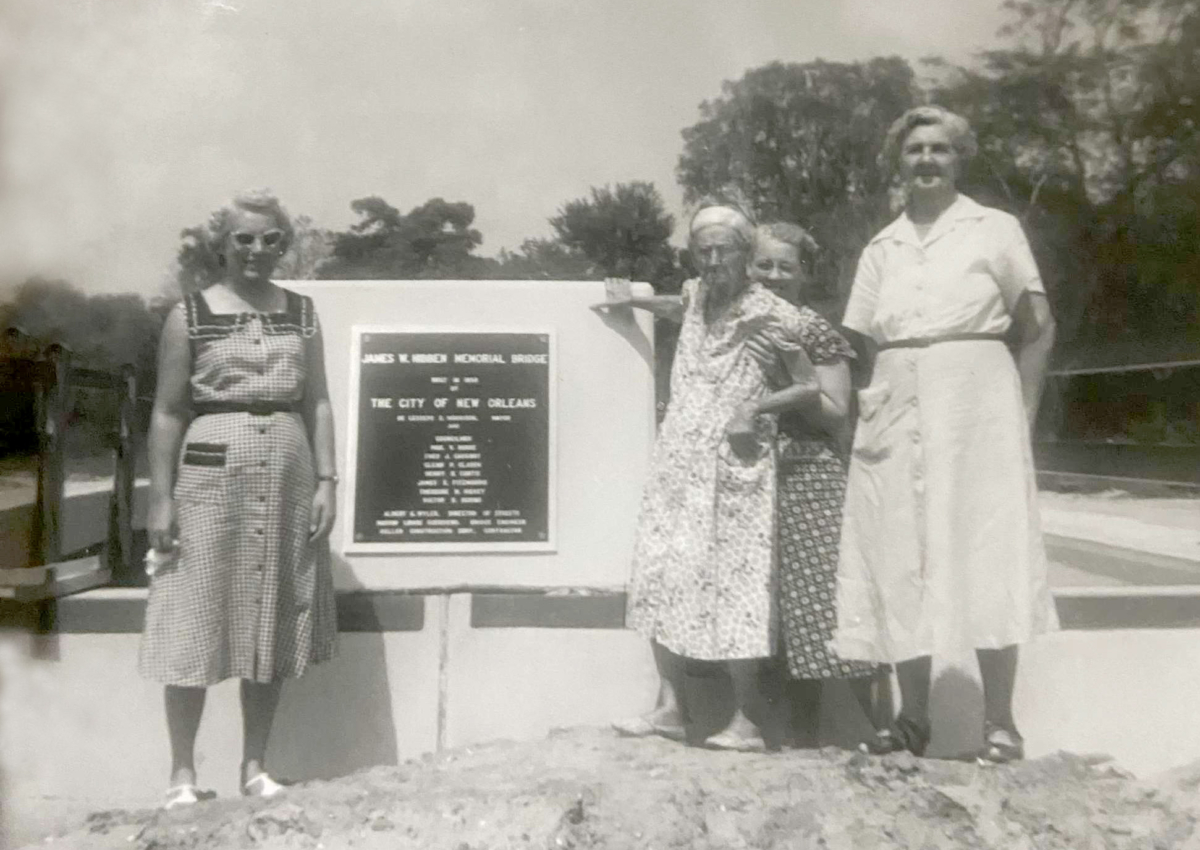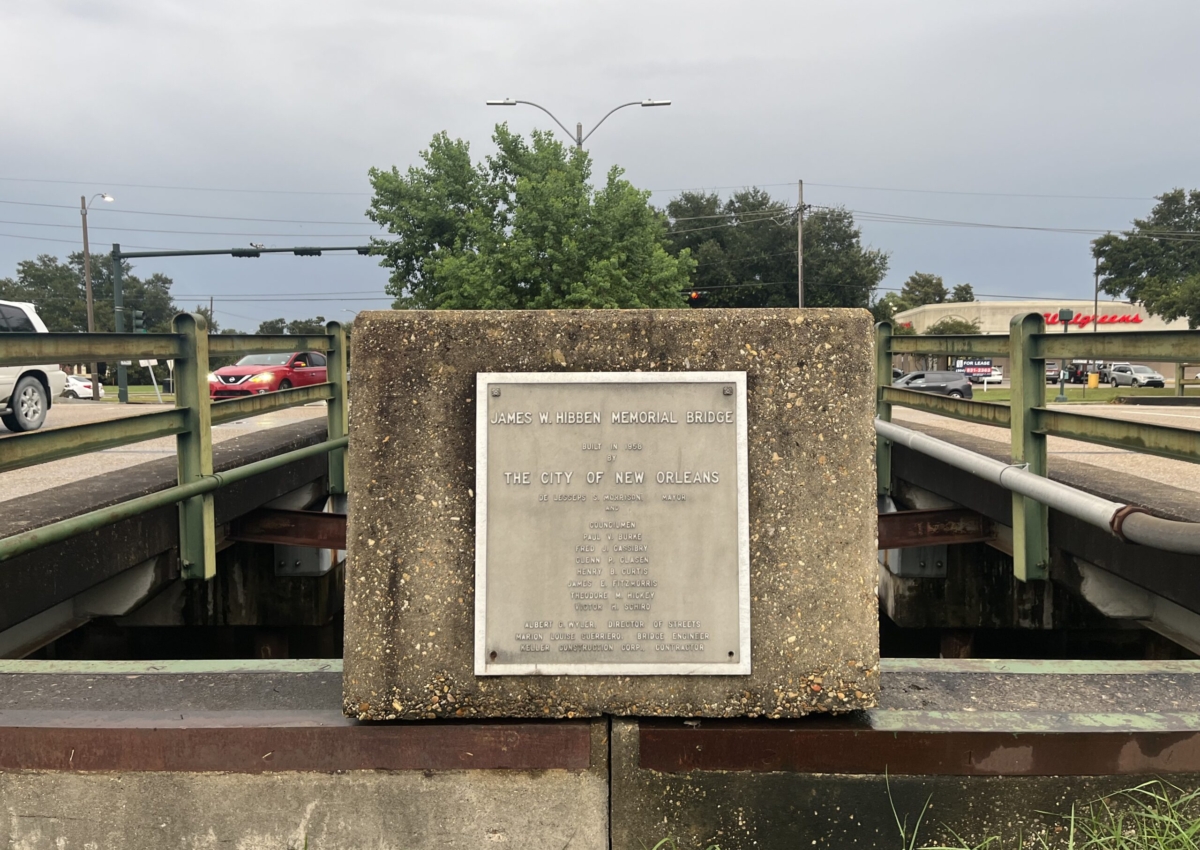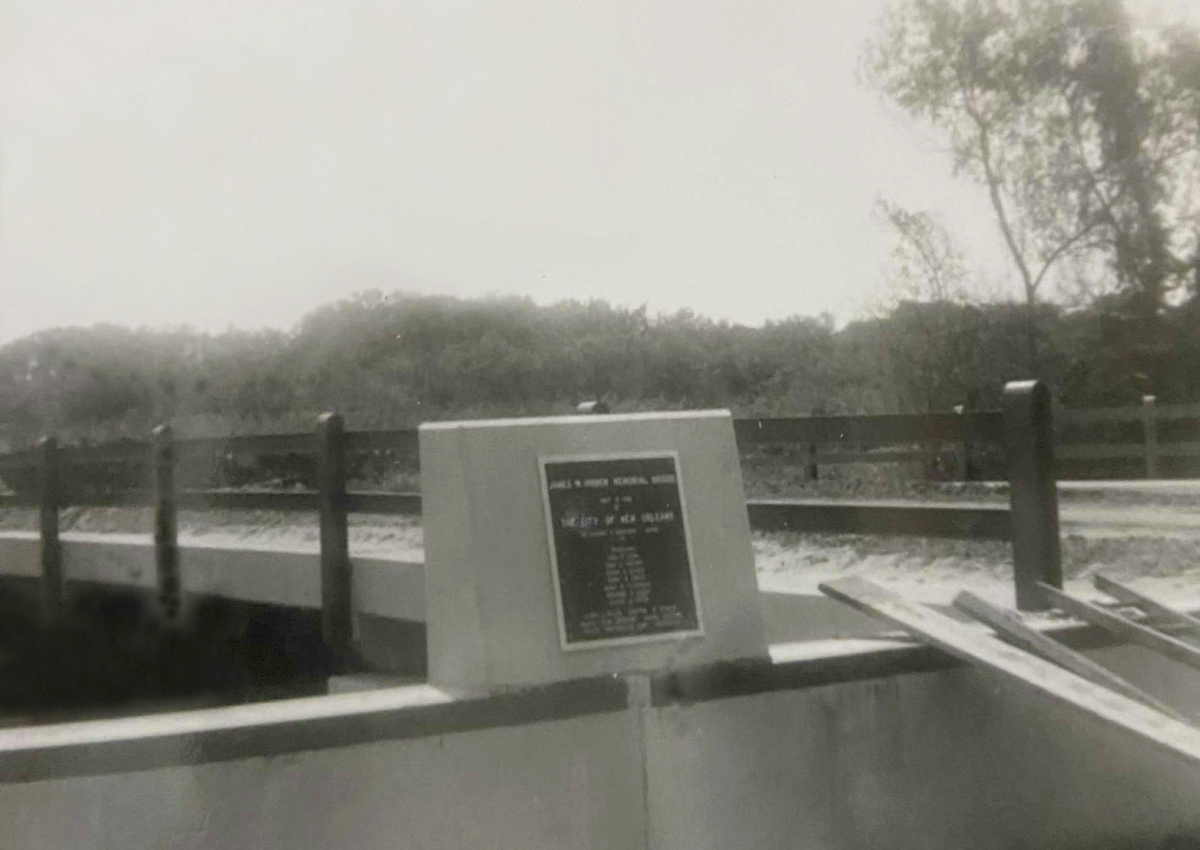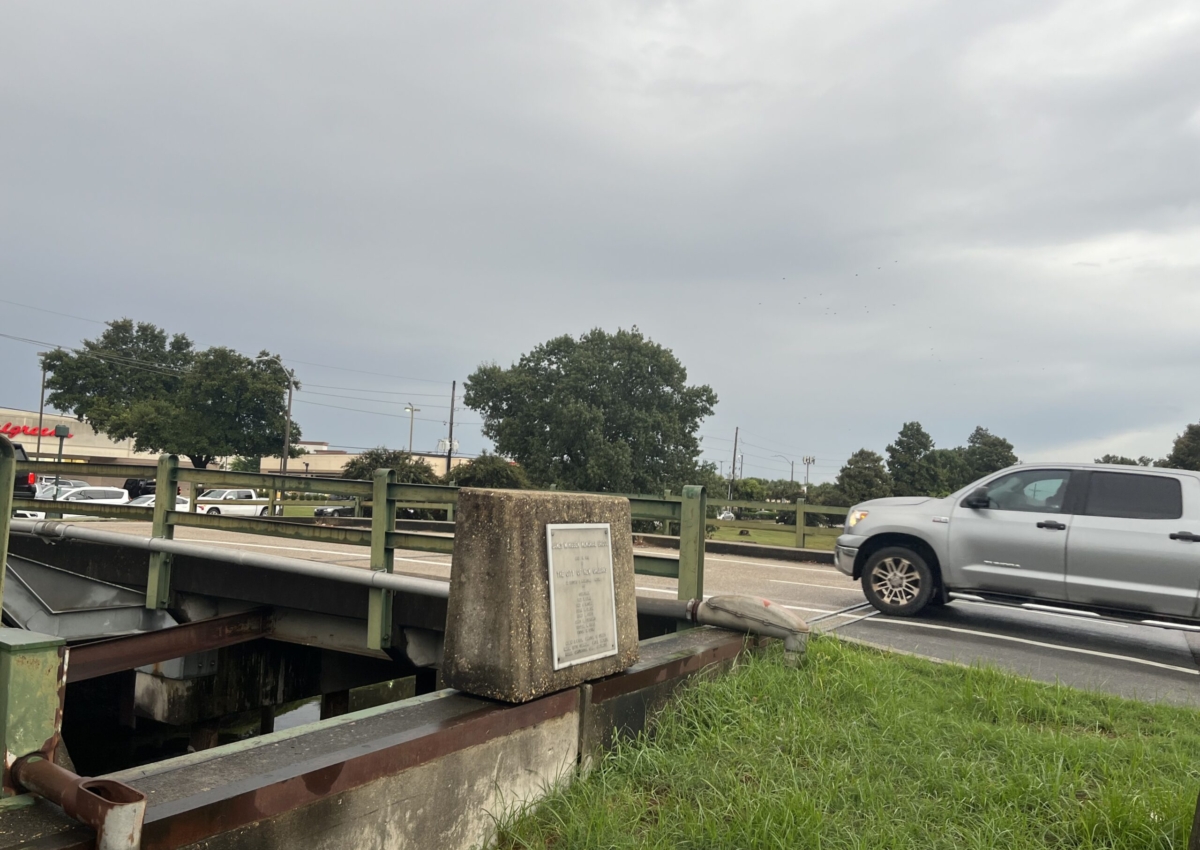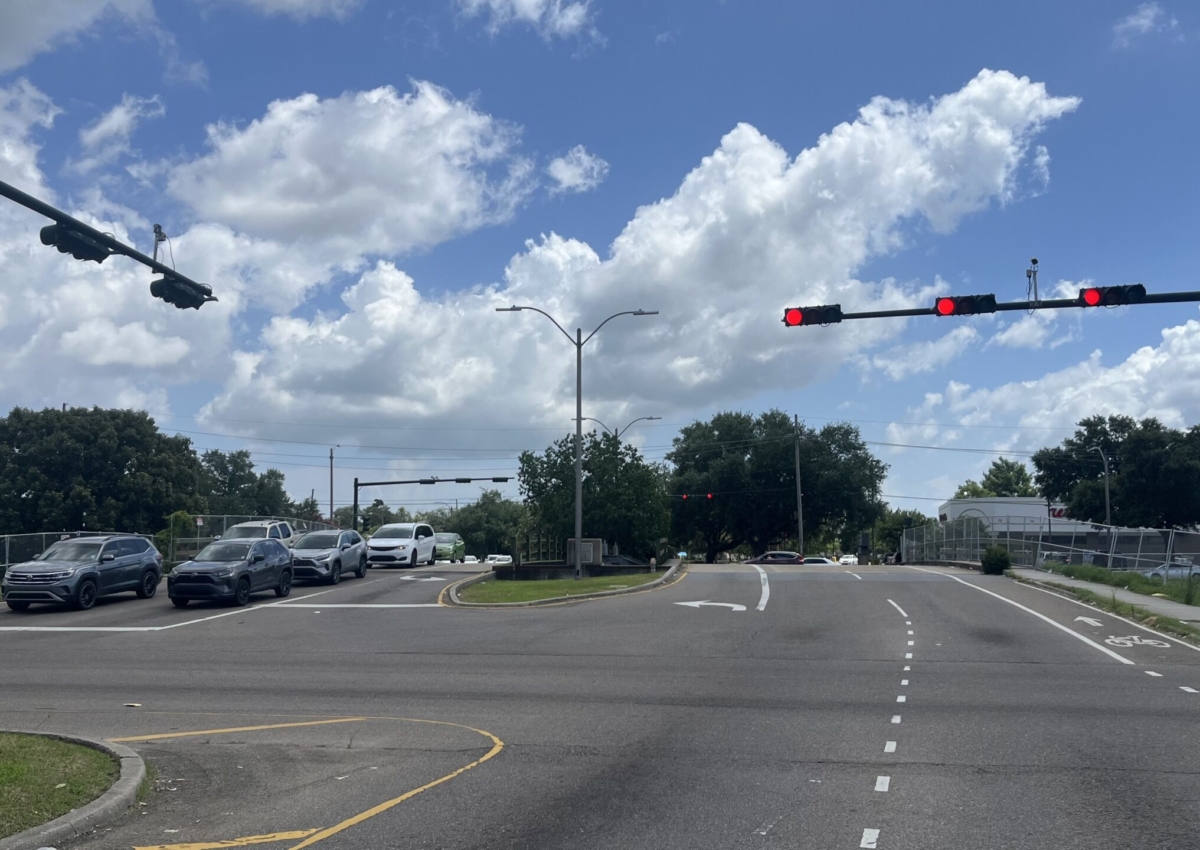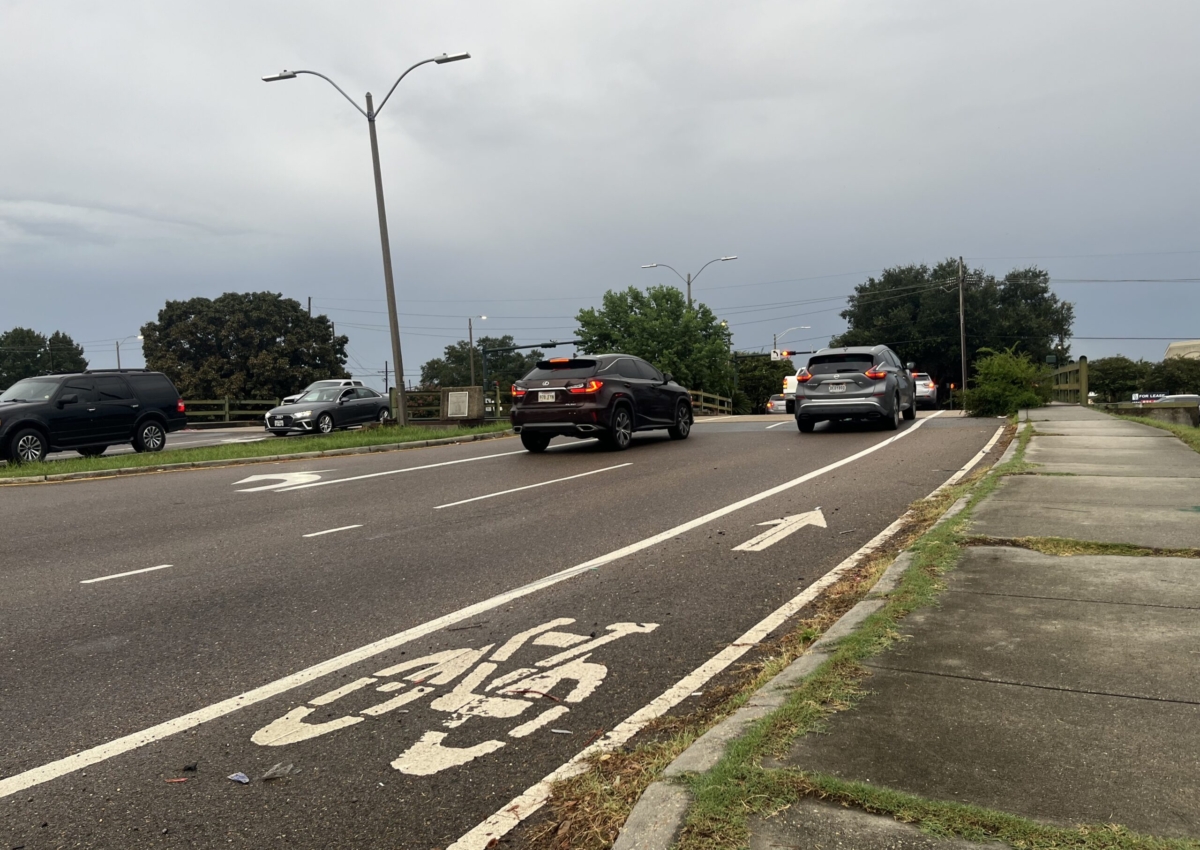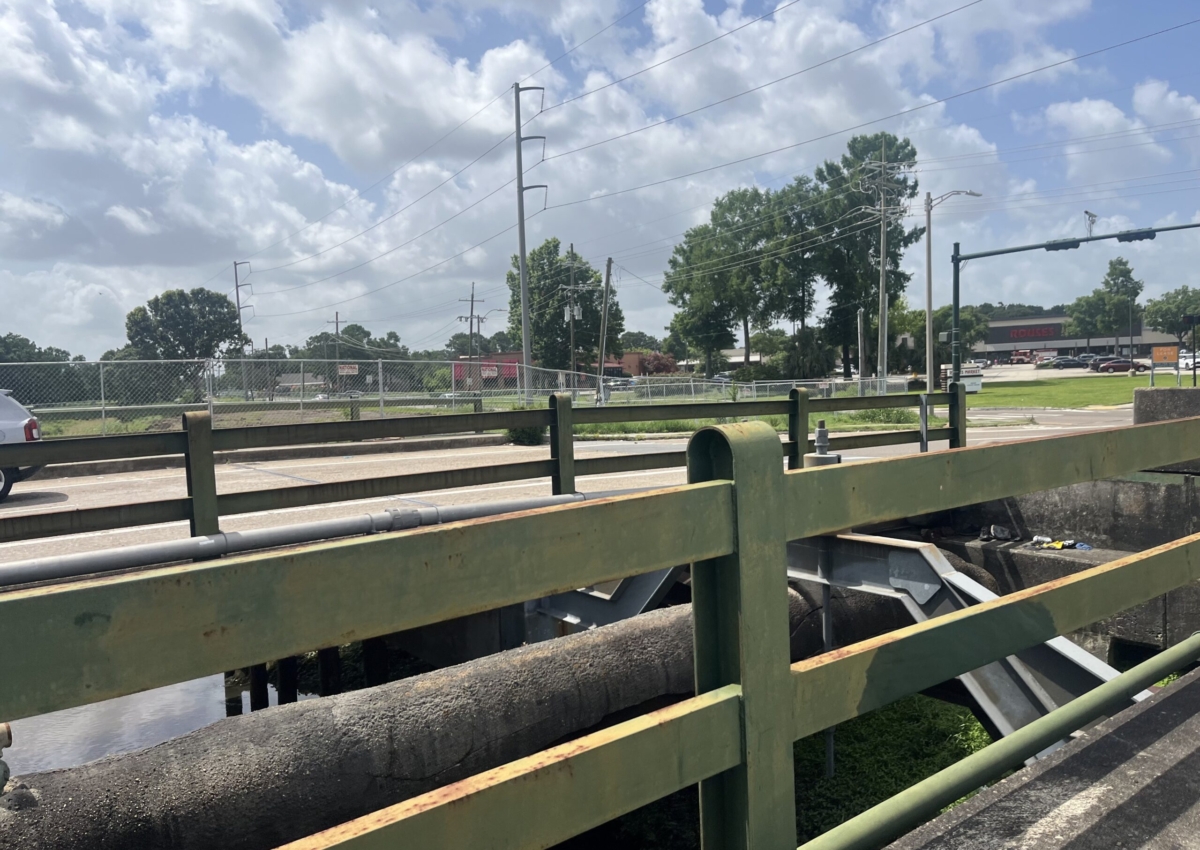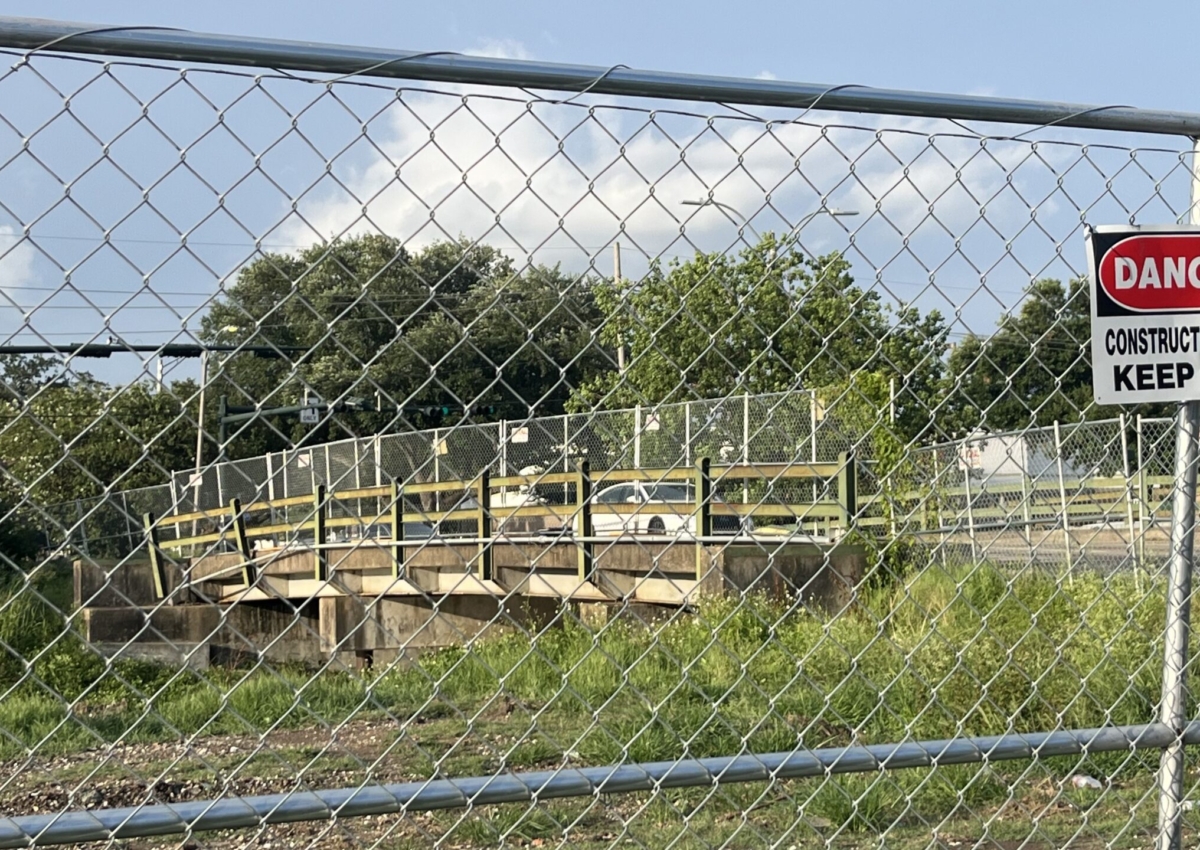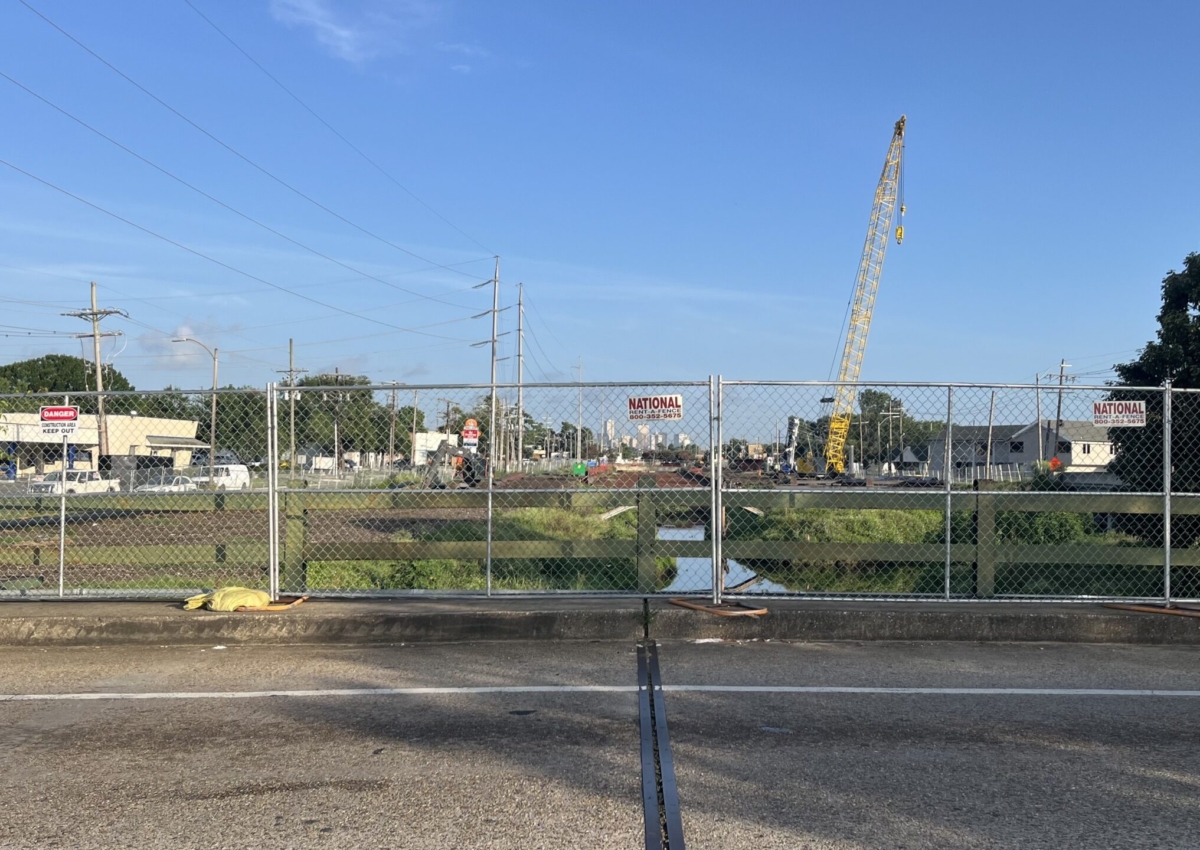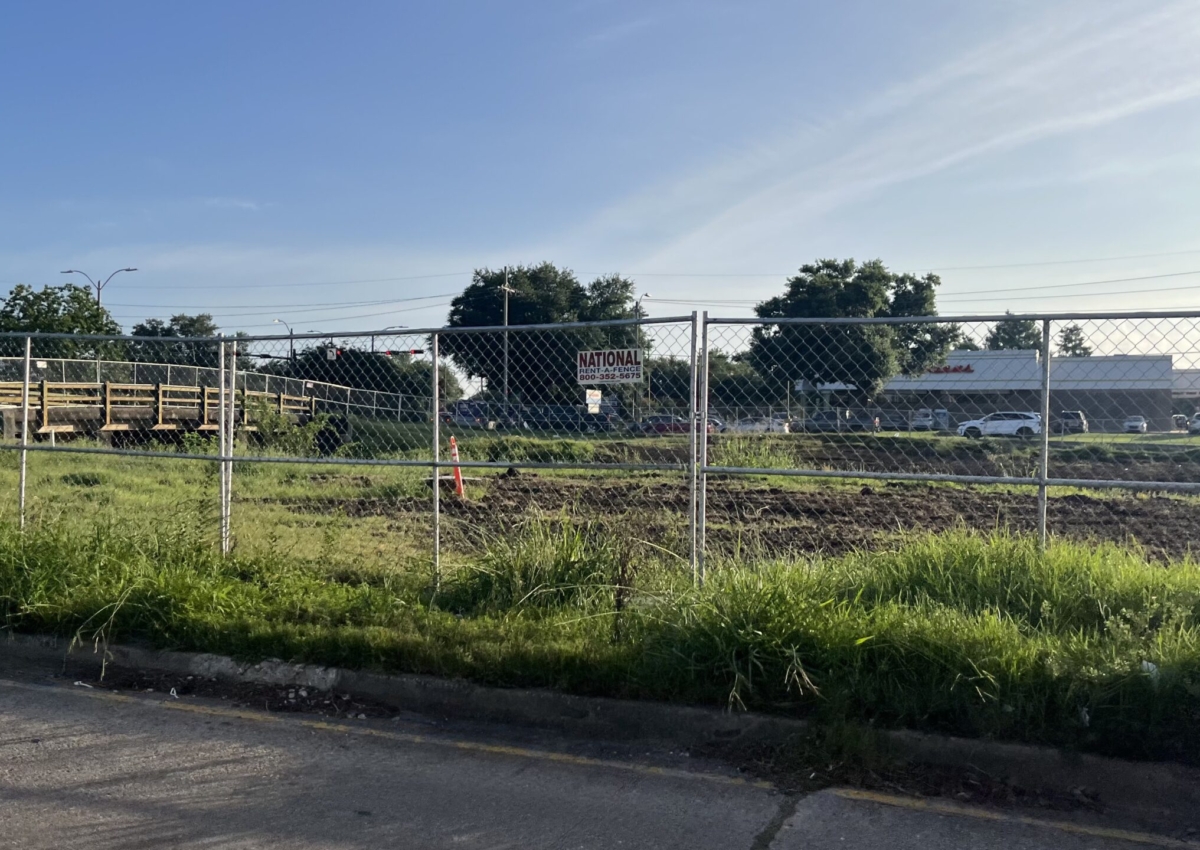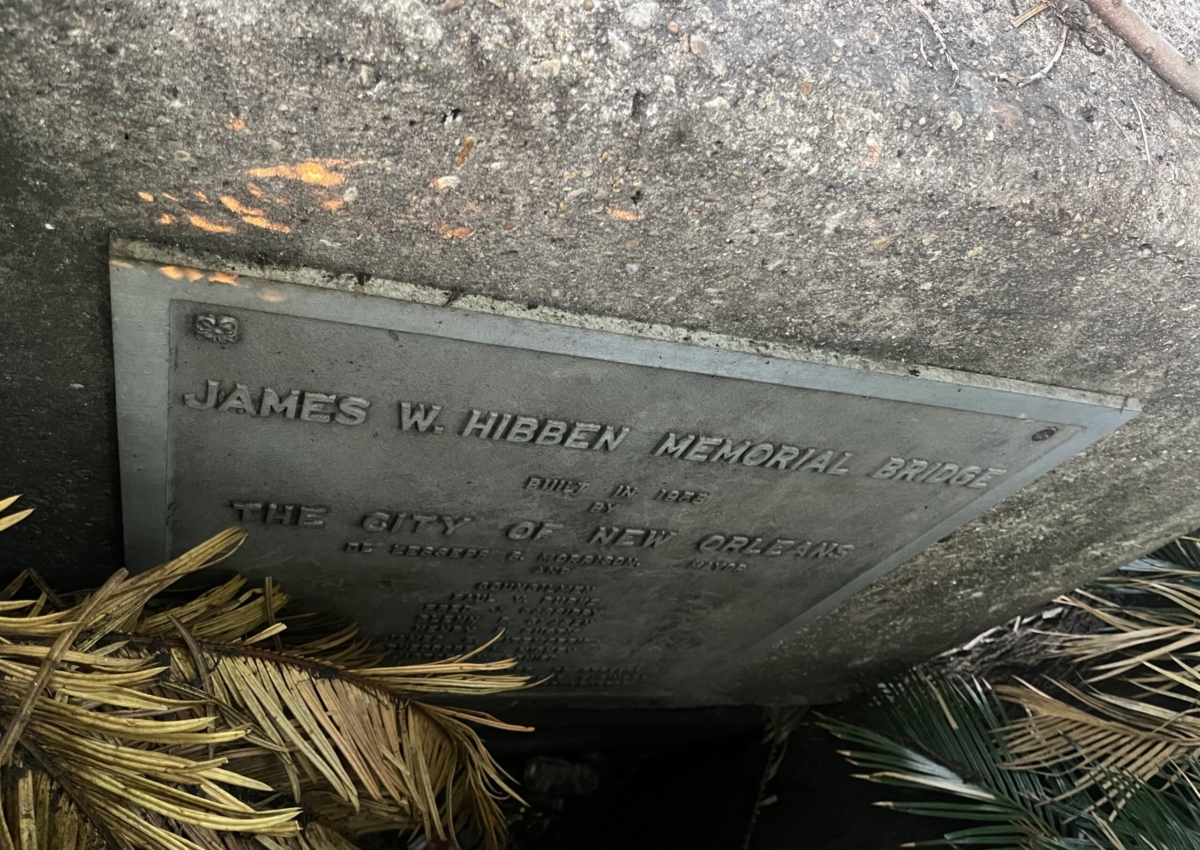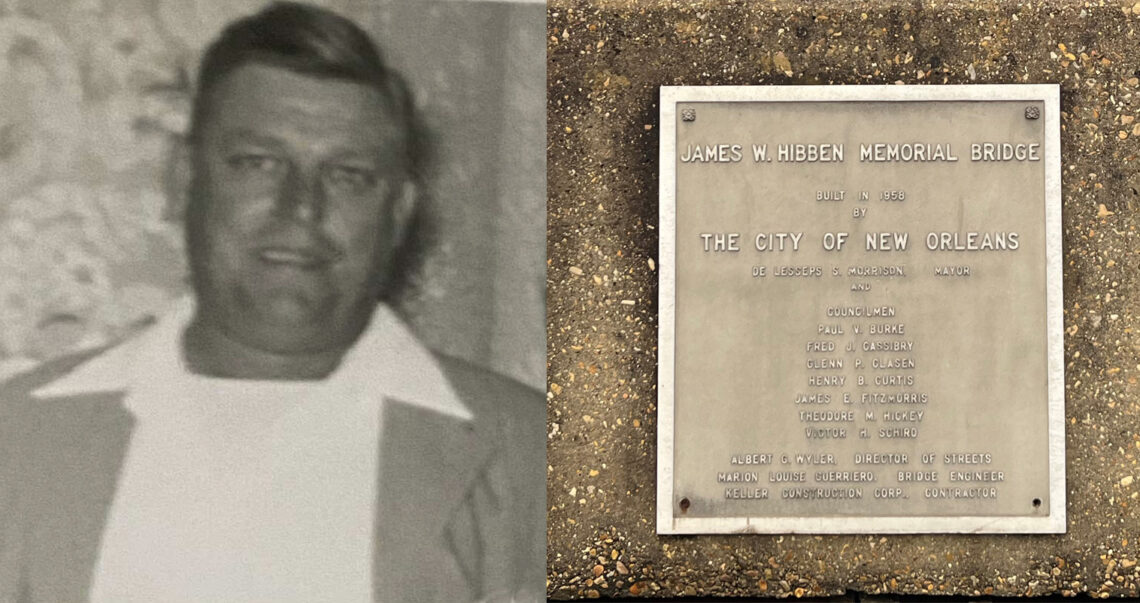
‘Shavey’ Hibben’s bridge will be demolished, but his legacy lives on for West Bank family
It was the spring and summer of 1958, and the New Orleans region and the West Bank in particular were seeing changes that remain today.
The first Greater New Orleans Bridge span opened for traffic on April 15, 1958, providing motorists with an alternative to the Huey P. Long Bridge and further linking the east and west banks. More than 8,400 vehicles crossed high above the Mississippi River during the first day of operation.
Less than two weeks later in Belle Chasse, the U.S. Navy formally dedicated Alvin Calendar Field as the replacement for its airfield at New Orleans’ Lakefront. The Naval Air Station-Joint Reserve Base became the first military installation of its kind in the nation. Flying F-11 Tigers, the Navy’s Blue Angels wowed the thousands of onlookers who packed the flight line for team’s first air show in the West Bank sky.
And on June 12, 1958, the New Orleans City Council voted unanimously to name the newly constructed Holiday Drive bridge over the Algiers Outfall Canal for one of Algiers’ native sons, James W. Hibben Sr.
Hibben was spending the weekend at a Plaquemines Parish fishing camp when at 12:30 a.m., on March 2, 1958, he suffered a massive heart attack. A husky blue-collar man who eked out a living with his hands, he died at age 43, leaving behind a wife and five children in Algiers Point. The funeral mass that was held the following day at Holy Name of Mary Church preceded his burial in Gretna’s McDonogh Cemetery.
“They called him ‘Shavey,’” the West Bank Herald newspaper noted in a piece about his passing that was published on March 6, 1958. “There were hundreds and hundreds of lifelong residents of Algiers who did not know him by any other name. They knew him because he could probably bring about more laughs than any other person on the westbank.”
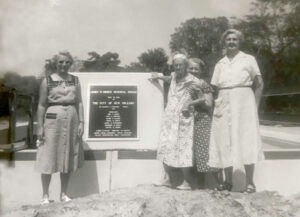
The Holiday Drive bridge over the Algiers Outfall Canal, at what then was Victory Drive (renamed Gen. de Gaulle Drive in 1960), included two plaques designating the iron and concrete structure as the James W. Hibben Memorial Bridge. Shavey’s sister, mother and grandmother posed proudly for a photograph with one of the plaques soon after it was erected.
Shavey’s grandson Eddie Hibben Jr., can trace some of his earliest memories to the 4-lane bridge named for the grandfather he never knew.
“My father would always say, ‘We’re crossing grandpa’s bridge,’” said Eddie Hibben Jr., 55, who lived in Algiers Point before moving to Marrero when he was 13 years old.
For almost seven decades, the James W. Hibben Memorial Bridge has served as a vital link in the heart of Algiers’ business corridor. When the bridge was built, that part of Algiers was still ripe for residential and commercial development. Street lights were still a new feature on Holiday Drive’s neutral ground.
This year, the Hibben bridge will be demolished.
‘Not structurally sound’
The decision is rooted in the federally funded Algiers drainage improvement project, in which the Gen. de Gaulle canal banks are being hardened with concrete “flume.”
Working under the supervision of the U.S. Army Corps of Engineers New Orleans District, a contractor will order Hibben bridge’s closure to all traffic once flume construction is within 100 feet of the structure.
The initial plan called for retaining the Hibben bridge and inspecting it once construction was complete before reopening it. Replacing the bridge is not part of the federal contract, meaning it was up to the City of New Orleans or the state of Louisiana to pay for a replacement. There was discussion of resurfacing it before it reopened.
Only after construction on the flume began at Behrman Place in late 2024 did the city decide to demolish and replace the bridge.
“It’s not structurally sound,” District C City Councilman Freddie King told the Huntlee Village Neighborhood Association on June 5. “They don’t want to put a Band-Aid on a structurally unsound bridge.”
Its replacement is now included in a list of myriad municipal infrastructure and equipment needs that would be funded under a proposed $500 million bond issue that city officials hope voters will approve in the Nov. 15 general election.
“The bridge has experienced some degradation, as noted by the (state Department of Transportation and Development) in recent inspections,” DPW Director C. Rick Hathaway told Algiers residents at King’s request in a June 10 email.
“This has caused concern and may result in a limitation of weight of vehicles allowed to cross the bridge,” Hathaway said.
Hathaway told Our Streets Nola on July 18 that the demolition plans were being finalized. The city then will prepare the bid package and advertise it in search of a contractor that will demolish the bridge.
Meanwhile, the U.S. Army Corps of Engineers New Orleans District, which is overseeing the drainage canal improvements, told Our Streets NOLA on July 14 that it did not have a timeframe for when Hibben bridge will be closed.
But once it’s closed, Algiers motorists can expect to be without a canal crossing at Holiday Drive for as long as a year before a new bridge is built, King has said.
In advance of the demolition, the Department of Public Works removed the south-facing plaque in early August and has it stored in its facility, Hathaway confirmed to Our Streets NOLA on Aug. 6.
Our Streets NOLA discovered a long-hidden Hibben plaque on the north end of the bridge on Aug. 7. The plaque, shrouded by thick vegetation, was to be removed and stored as well, Hibben said.
What becomes of the plaques or whether one or both will be rededicated at the site once a new bridge is built remains to be seen.
“Unless directed otherwise, we have every intention of reinstalling the plaque for the rededication ceremony,” Hathaway said in July.
‘Beloved for his acts’
There had been a Hibben in Algiers Point since Shavey’s great-grandfather, also named James, settled in the neighborhood with his new bride just after the Civil War. The South Carolina native was 76 years old when he died on New Year’s Eve 1903. The funeral service was held in his home at 818 Slidell Street (the City of New Orleans renamed Slidell Street Red Allen Way in 2022).
Shavey was born and raised in Algiers Point. He spent his youth living at 739 Elmira Ave., according to the 1920 and 1930 censuses.
He was close friends with artist Roy Kern and his son Blaine Kern Sr., “Mr. Mardi Gras” and founder of Kern Studios — who also grew up in Algiers Point, Eddie Hibben Jr. said. Shavey’s friendship with the younger Kern played a role in the city naming a bridge for him.
Shavey often joined with the Kerns in rebuilding floats that caught fire, his grandsons recall hearing in their youth. Eddie Hibbein Jr., heard a humorous story about his grandfather directly from Blaine Kern Sr. “It seems my grandfather would go to his house and grab him by his feet while he was sleeping and yell, ‘Come on, it’s time to get up, Blaine, and go to work,'” Eddie Hibben Jr. said.
Shavey participated in numerous charities to help Algierines, Eddie Hibben Jr., said. He also was active in the Old Reliable Pleasure Club, the carnival organization affiliated with the Krewe of Choctaw.
In 1957, Shavey served as Choctaw’s sergeant-at-arms, at a time when the parading organization’s royalty embarked on the Mississippi River by boat beginning at the Todd Shipyard site just downriver from the Naval Station. It traveled upriver to Gretna and back to Algiers. Choctaw then paraded exclusively in Algiers Point, beginning at Brooklyn and Newton streets. After winding through the Point, it ended at its den at 219 Newton St.
Shavey’s daughter Debbie was a papoose in Choctaw one year. Another of his daughters, Carol, served as a Choctaw maid in 1958, just weeks before he died.
At the time of his death, he was a carpenter working for the Orleans Parish public school system. During those years, the public schools system included military barracks converted into an elementary school adjacent the Naval Station.
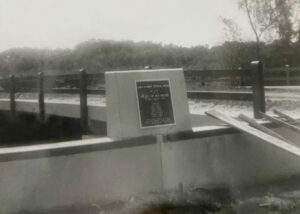
“Married at an early age during the depression, James knew what hard work was,” the West Bank Herald noted. “He could always find additional work to provide for his growing family. Working as an employee of the Orleans Parish School Board and finding extra work at night and on week-ends, he was able during the past few years to make remarkable progress in providing essentials of the home.
“Depression, war, storm or good weather, ‘Shavey’ Hibben was a person everyone enjoyed knowing,” according to the newspaper. “Possessing unusual wit, he coined many special words and phrases of his own. When others were disappointed and unhappy, ‘Shavey’ was the one to have around. He could brighten up matters in a few minutes.”
Eddie Hibben Jr., the last in the Hibben bloodline to carry the name locally, heard many stories about his grandfather and knew him as someone who loved Algiers.
“He was so beloved for his acts, helping and improving Algiers no matter who you were,” said Eddie Hibben Jr., one of Shavey’s five remaining grandchildren.
‘In the name of progress’
The Holiday Drive bridge was being built when Shavey died.
He died at a camp owned by Dr. Henry LaRocca, a noted physician who founded Algiers General Hospital, Eddie Hibben Jr. said. Dr. LaRocca died the year before Shavey passed, but people continued to use his fishing camp, which was on Lake Washington off the Mississippi River’s west bank below Port Sulphur, said retired Dr. Frank Wagner, secretary/treasurer of the Algiers Historical Society, who self-published a book about LaRocca, “Two Men and a Hospital: The Evolution of Algiers General Hospital.”
Given how well he was known in Algiers, Blaine Kern Sr. and City Councilman Victor Schiro brought the idea of naming the bridge for Shavey to Mayor deLesseps Morrison, Eddie Hibben Jr., said, recounting what he was told.
The City Council approved the naming by a motion, only, during its June 12, 1958 meeting at City Hall. It’s not known who introduced the motion and who seconded it. In that same motion, the council voted to name a nearby bridge on Victory Drive over the Algiers Outfall Canal for a deceased judge, Edward C. Brodtman, also of Algiers. It’s unclear when that second bridge was demolished or whether it had a plaque noting the deceased jurist.
There was no resolution or ordinance that would provide further clarity to the bridge naming, according to the New Orleans City Archives.
When the bridge was completed in 1958, the area around it appeared to be still ripe for development, according to photographs Eddie Hibben Jr. provided that show family standing beside the plaque designating it as the James W. Hibben Memorial Bridge.
In a statement to Our Streets NOLA, Shavey’s descendants said they would love to see the plaque remain at the site. “We understand that progress happens, and if it was to help his community, we believe he would rather see progress continue. That bridge is the only thing we have that brings out the stories passed down to us about the grandfather we never got to know.”
That the bridge has retained the Hibben name and the plaque almost seven decades is refreshing to Shavey’s descendants.
“If there’s one thing that the family was always expecting during times of political turmoil, it was that sooner or later, something was gonna happen with the plaque being removed, or the bridge being renamed,” Eddie Hibben Jr. said.
“We are very fortunate that it stood as long as it did,” he said. “Now in the name of progress, I think my grandfather would definitely understand, because his heart was always part of Algiers.”
NOTE: This story was updated on Aug. 13 to include information about the Department of Public Work’s removal of the south-facing plaque and the discovery of a long-hidden second plaque on the north end of the bridge. A photograph of the second plaque, shrouded by vegetation, has been included in the slide show.
By Paul Purpura, with invaluable contributions from the Algiers Historical Society, Suzanne Wessing, Danny Monteverde, Bob Ussery and the New Orleans City Archives.
